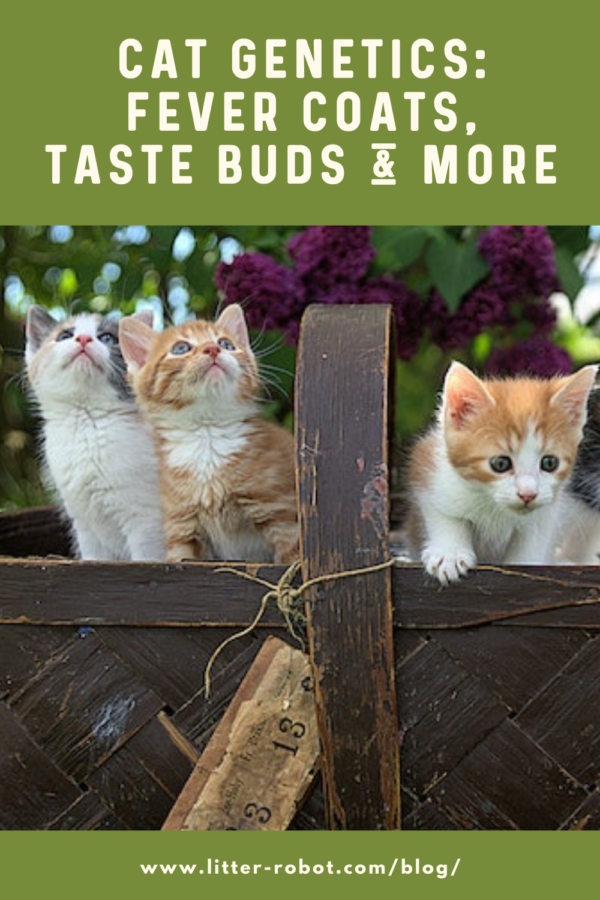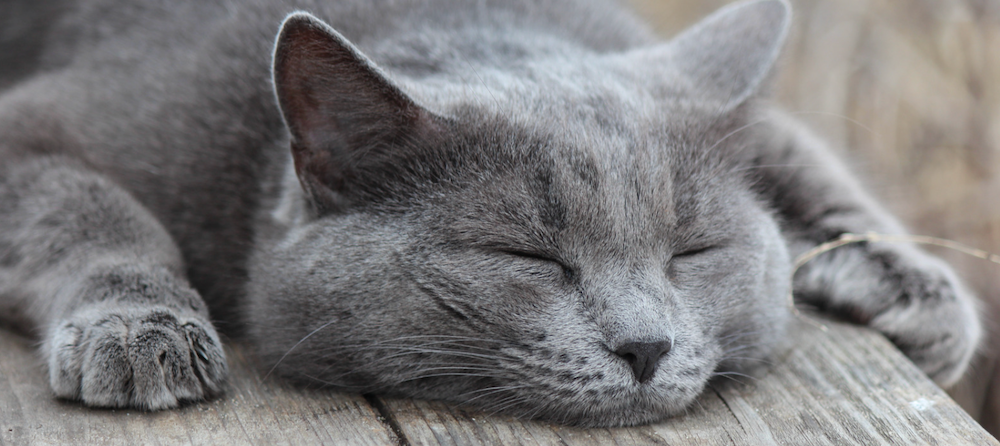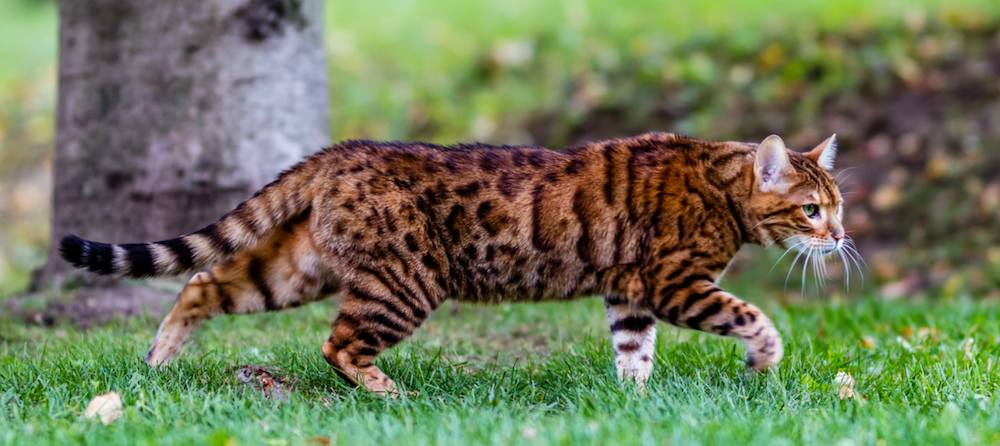Get ready for your crash course in cat genetics! For example, ever wondered how many chromosomes do cats have? Learn all about cat coat genetics, and get answers to some fascinating feline questions, such as: Can cats taste sweetness? And what is a fever coat?
How many chromosomes do cats have?
Cats have 19 chromosome pairs, for a total of 38 chromosomes. Comparatively, humans have 46 total chromosomes and dogs have 78. The number of chromosomes doesn’t correlate with intelligence or complexity, however. For example, potatoes have more chromosomes than humans (48) and some species of ferns have more than 1200 chromosomes!
Can cats taste sweetness?
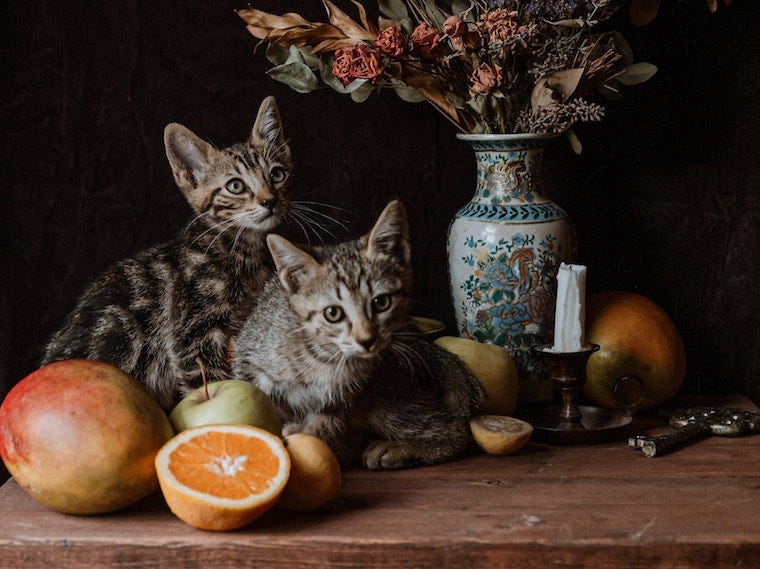
With genetics invariably comes mutations. One of domestic felines’ most intriguing genetic mutations is a chemoreceptor in their taste buds that prevents cats from tasting sweetness. This is why your cat isn’t all that interested in your sugary treats, fruit, and other sweet-tasting foods. (Well, that’s more for you!)
Cat coat genetics
We talked about how many chromosomes cats have, but what about their genes? Cats have roughly 20,000 genes—and roughly 20,000 different coat varieties! We kid… But there’s no denying that cat coat genetics is a fascinating subject due to the vast differences seen in fur color, pattern, length, and texture among felines.
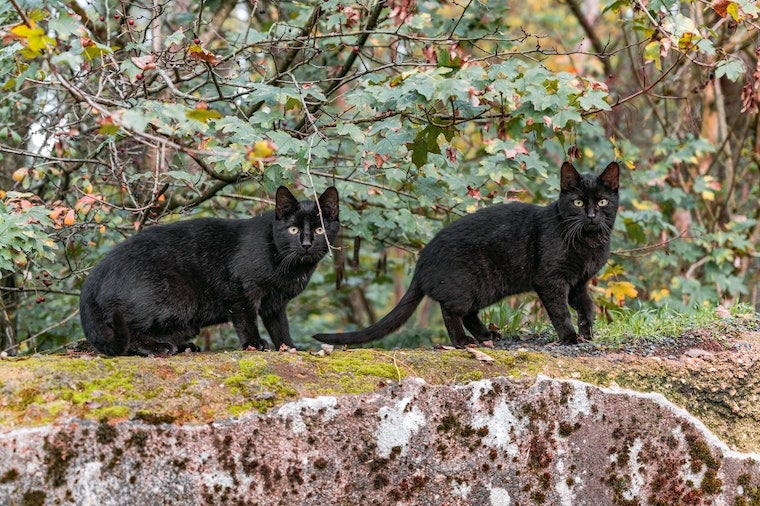
Coat color
According to The International Cat Association (TICA), all cat coat colors are a variation of black and red (orange); the exception is solid white, which is a “masking gene.” There are dominant colors (black, red, etc.) and recessive colors (dilute, cream, blue, etc.).
The Cat Fanciers’ Association brings us some interesting cat genetics facts related to coat color:
- Male kittens always obtain both color genes from the mother. This is why 4 in 5 orange tabbies are male: The X chromosome is responsible for the orange coloring, and male cats (XY) only need the orange gene from their mothers (XX).
- Female kittens obtain one color gene from each parent.
- Tri-color cats (calico) are almost always female because two X chromosomes are needed to create the tri-color coat.
- A white cat must have a white parent.
- Two recessive color parents (cream, blue, etc.) cannot produce an offspring of a dominant color (black, red, etc.).
- All red/orange cats carry the agouti gene, meaning they always display some form of tabby markings. This also means there has never been and never will be a solid orange feline.
What’s a fever coat?
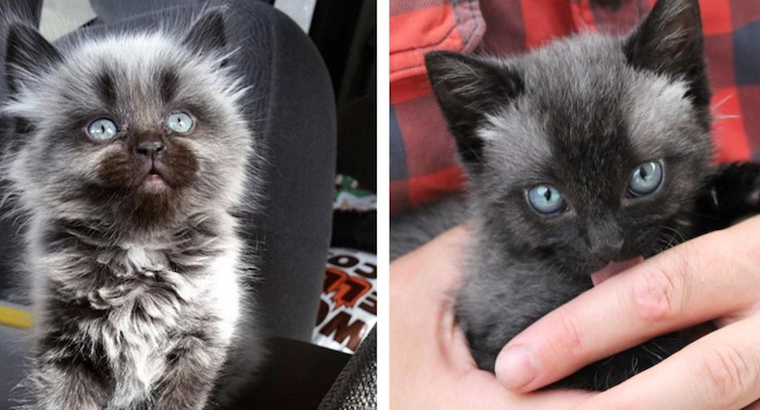
Fever or high stress during a feline pregnancy can sometimes produce a fascinating (and thankfully harmless) effect on kittens known as fever coat. A fever coat cat will be born with fur that is a silver-type color, rather than a color that would arise through their genetics.
However, this silver fever coat is generally replaced by the kitten’s natural fur colors in the weeks following birth.
Coat pattern
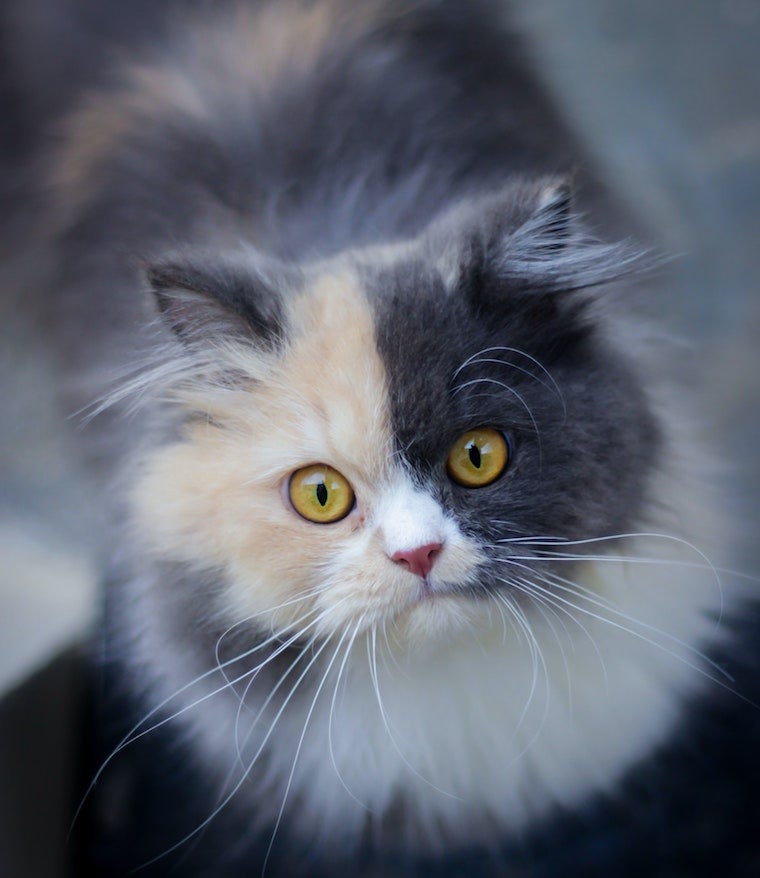
A kitten’s pattern can be inherited from either parent. Cat coats present in a variety of patterns:
- Solid is one color without stripes.
- Tabby encompasses all cats that share the agouti gene, which results in 1 of 4 distinct coat patterns: mackerel (aka striped); classic (swirled or marbled); ticked (a “salt and pepper” or “sand” appearance); and spotted. Two classic tabby parents cannot produce a mackerel, spotted, or ticked tabby kitten. A ticked tabby must have a ticked tabby parent. A mackerel or spotted tabby must have a mackerel, spotted, or ticked tabby parent.
- Colorpointed is when color appears on only the face, feet, and tail (most commonly associated with Siamese cats). Colorpointed cats can be solid or tabby. To produce a colorpointed kitten, both parents must carry the colorpointed gene.
- Bi-color refers to a cat with white fur combined with some other color. A common bi-color cat is the black-and-white tuxedo cat.
- Tri-color refers to a cat with white combined with two other colors, commonly black and red/orange—most distinctly, a calico cat. You might also consider the black-and-orange tortie cat to be tri-color, but others see the tortie as closer to bi-color.
- Shaded, smoke and tipped are additional cat coat patterns usually involving undercoats.
Coat length and texture
Did you know that two longhair cats cannot produce a shorthair kitten? That’s because the gene that determines cat fur length in its dominant form codes for short hair; in its recessive form, it codes for long hair.
Genetic coat mutations in cats also result in curly coats (like Rex cats), wirehair, sparse hair, and, of course, hairlessness.
Now you know these fascinating facts along with some of the basics of cat genetics!
Sources:
Cover photo by Jari Hytönen on Unsplash
